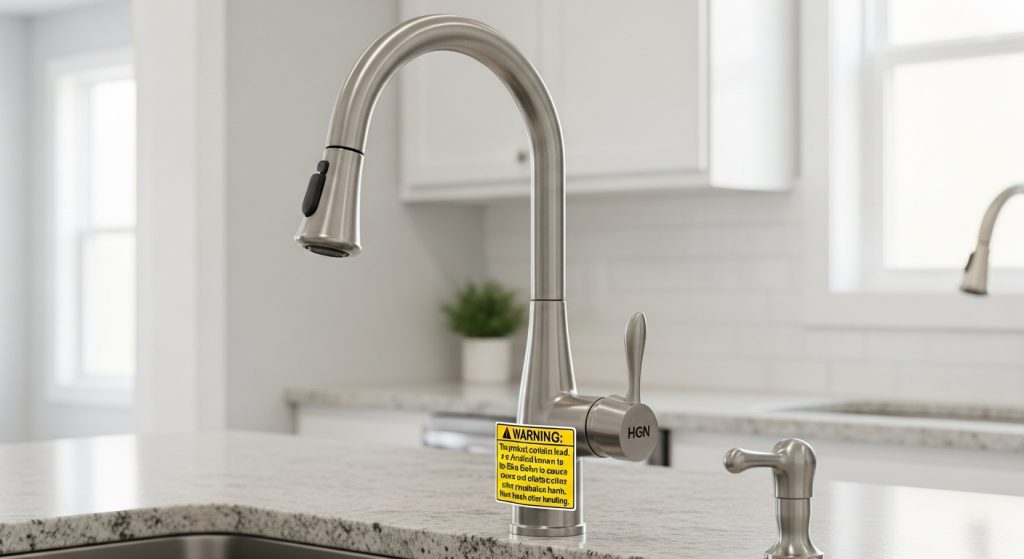In recent years, consumers have become more aware of the materials and safety standards behind the products they use daily. One area that has gained particular attention is plumbing fixtures, especially faucets. A new topic that has surfaced in many conversations is the hgn kitchen faucets lead warning. This issue has raised concerns for homeowners, renters, and builders alike, as lead in water systems can have long-lasting health consequences. Understanding the situation, the risks, and the steps consumers can take is essential in ensuring safe water for every household.
Why Lead in Faucets is a Concern
Lead has long been recognized as a harmful substance, especially when it enters drinking water. Even small amounts of exposure can be dangerous over time, particularly for children, pregnant women, and older adults. It can affect neurological development, blood pressure, kidney function, and overall well-being. That’s why the news of the hgn kitchen faucets lead warning has created so much discussion.
Consumers often assume that modern faucets are entirely safe and regulated. While most products on the market meet basic guidelines, issues sometimes arise when manufacturing practices do not align with strict safety standards.
What the Warning Means
When we hear about the hgn kitchen faucets lead warning, it doesn’t automatically mean every single faucet from this brand is unsafe. Instead, it indicates that certain products may contain levels of lead higher than expected or may not comply with the latest safety regulations. These warnings are typically issued when testing reveals concerns that consumers should know before installation or continued use.
This doesn’t mean panic is necessary—it means awareness. Consumers should pay attention to product labels, certificates, and testing results to ensure the faucets in their homes are safe.
The Role of Regulations
The plumbing industry is heavily regulated, especially in regions like the United States and Europe, where strict standards for lead levels exist. A faucet that fails to meet those requirements may still slip into the market if testing or monitoring is insufficient. The hgn kitchen faucets lead warning is a reminder that regulations are in place for a reason and that consumers should verify product compliance before purchasing.
Certification labels, such as those for lead-free standards, can be a helpful guide. Responsible manufacturers typically display these openly, but it’s up to buyers to make sure they look for them.
Health Impacts of Exposure
The seriousness of the hgn kitchen faucets lead warning becomes clear when considering the health risks. Lead exposure in water is often invisible—it has no taste, no smell, and no color. Families could unknowingly consume contaminated water for months or even years.
Children are particularly at risk. Exposure can cause developmental delays, behavioral problems, and learning difficulties. For adults, it can increase blood pressure, reduce kidney function, and even contribute to fertility problems. The health impact is cumulative, which makes prevention critical.
What Homeowners Should Do
If you already have an HGN faucet installed and are concerned about the hgn kitchen faucets lead warning, the first step is to check whether your specific model has been mentioned in any consumer advisories. You can also contact the manufacturer for clarification and request documentation regarding compliance with safety standards.
In the meantime, testing your water is a practical step. Simple water testing kits are widely available and can provide peace of mind. If elevated lead levels are detected, replacing the faucet and consulting with a plumber for a full system check may be necessary.
Alternatives and Safer Choices
The good news is that consumers have options. There are many certified lead-free kitchen faucets available on the market today. These products go through rigorous testing to ensure they meet or exceed safety standards.
The hgn kitchen faucets lead warning serves as a reminder that choosing a safe faucet should be about more than just design or price. Materials, certifications, and long-term health should always be part of the decision.
The Manufacturer’s Responsibility
Manufacturers play a key role in maintaining consumer trust. When an issue like the hgn kitchen faucets lead warning surfaces, companies must be transparent in addressing concerns. Whether through recalls, product redesigns, or clearer labeling, proactive measures can prevent damage to reputation and ensure customer safety.
This situation highlights the importance of corporate responsibility in the home improvement sector. Brands that prioritize consumer health and safety will continue to earn loyalty, while those that ignore warnings may face legal and financial consequences.
Awareness for Builders and Contractors
It’s not only homeowners who need to pay attention. Contractors, plumbers, and builders should also be aware of the hgn kitchen faucets lead warning. Installing products without checking compliance could create liability issues down the road. Professional responsibility includes ensuring that clients are not exposed to unnecessary risks.
By staying informed about advisories and choosing certified products, contractors can protect both their clients and their reputations.
Looking Ahead
The broader lesson from the hgn kitchen faucets lead warning is that safety must always come first. Consumers now demand higher standards from the brands they trust. Governments and regulators continue to tighten guidelines, and technology makes testing more reliable than ever.
This moment is an opportunity for the industry to improve. By investing in better materials, clearer transparency, and customer education, faucet manufacturers can ensure that warnings like this become rare in the future.
Conclusion
The hgn kitchen faucets lead warning is a call to action for homeowners, builders, and manufacturers alike. It highlights the hidden risks that can exist in everyday products and the importance of vigilance in protecting family health. Lead exposure is preventable, but it requires awareness, testing, and informed decision-making.
By paying attention to warnings, choosing certified products, and demanding accountability from manufacturers, consumers can safeguard their homes and ensure access to safe, clean water. Ultimately, this issue underscores the fact that in home improvement, health and safety should always be the foundation.
